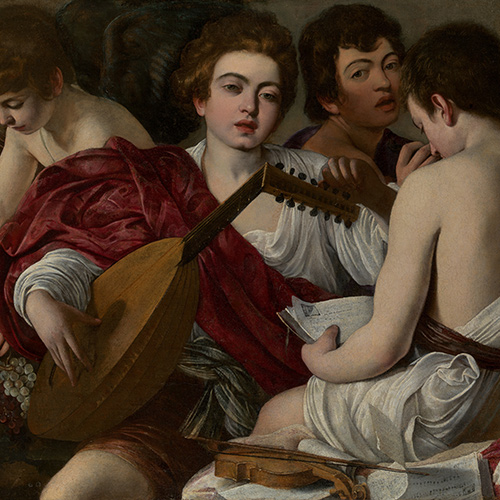
The Musicians by Caravaggio, 1597
One of the longstanding traditions in the visual culture of the West is that of the competition among different kinds of arts—whether painting and sculpture, or painting and poetry. Within this context, painting was often perceived as a sister art of music, though typically occupying a somewhat lower place in the hierarchy.
Nonetheless, throughout the Early Modern era, painters used musical motifs in their works to give their paintings a "voice" and convey a sense of beauty and harmony comparable to those qualities in musical compositions. Art historian Aneta Georgievska-Shine explores this relationship as it evolved between the 15th and the 17th centuries in Italy and Northern Europe.
November 25 Music and its Meanings in Italian Renaissance Art
Piero della Francesca to Bellini and Titian.
December 2 Sacred and Profane Music of the Northern Renaissance
Jan Van Eyck and Petrus Christus to Hieronymus Bosch and Pieter Bruegel.
December 9 Seductions of Music in the Italian Baroque
Caravaggio and his circle, including Orazio and Artemisia Gentileschi.
December 16 Joys and Consolations of Music in Dutch and Flemish Art
The allegories of Jan Brueghel to the musical concerts of Johannes Vermeer.
4 sessions
World Art History Certificate core course: Earn 1 credit*
General Information
*Enrolled participants in the World Art History Certificate Program receive 1 core course credit. Not yet enrolled? Learn about the program, its benefits, and how to register here.